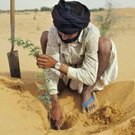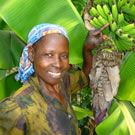A recent article in Freshplaza.com noted that Walmart (the world’s third largest public corporation and the world’s biggest private employer) who has operations in Guatemala is giving agricultural workshops to smallholder farmers. These workshops are aimed at improving the quality of production and also welfare in the regions where the workshops are being given.
Eight workshops were recently given to 488 producers in five departments. “A priority for us is to support the producer while seeking excellence in the quality of the products we offer.” According to Marcio Cuevas, Walmart’s corporate affairs manager in Mexico and Central America.
Aside from improving produce quality for inclusion in their supermarkets, an underlying theme of the project is aimed at improving the quality of living in participating communities.
Wal-Mart rewarded the 24 best producers offering a Good Agricultural Practices certificate.
The program looks at the quality of life in participating communities and the quality of produce by checking the drink ability of water, the microbiological quality of products, and an analysis of pesticide residues.
So this is an example of connecting smallholder farmers to one of the largest corporations in the world—and Walmart is promoting this concept. That means that there are also other buyers—wholesale buyers, exporters, food processors, local open-air markets, and local grocery store chains—who will work with smallholder farmers in order to maintain access to high-quality produce.
This is not restricted to agriculture. Looking for an existing market can apply to the tourism industry, manufacturing, the clothing industry, environmental restoration, and commodity agriculture such as sugar, cacao and coffee.
Developing a survey to determine what businesses are routinely in need of products and services that match your community’s capabilities is not that difficult. It can make your income generation project successful and sustainable for your community.
Questions? Please contact:
Online.Learning@csd-i.org
Sincerely,
Tim Magee, Executive Director
Center for Sustainable Development
Upcoming Online Field Courses. September 4: learn about the courses where students develop projects in the field.









